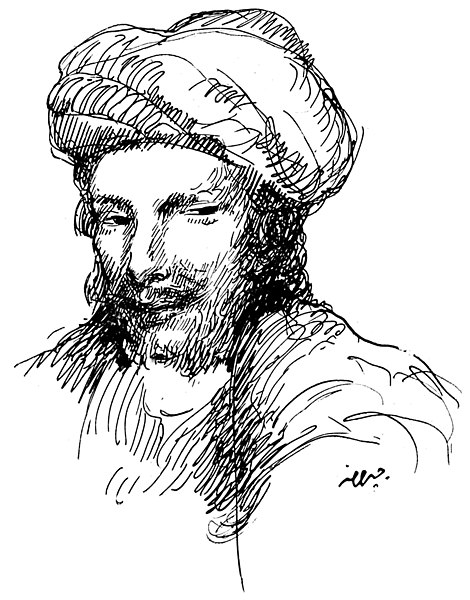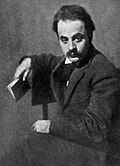Fichier:Abu Nuwas.jpg

Ñatanaʋ pʋnɛ pɩ-walanzɩ : Kpaɣna pɩkɩsɛlɩ 470 nɛ pɩtalɩ 600 ñɩŋgʋ. Tʋtʋ lɛɛtʋ : Kpaɣna pɩkɩsɛlɩ 188 nɛ pɩtalɩ 240 ñɩŋgʋ | Kpaɣna pɩkɩsɛlɩ 376 nɛ pɩtalɩ 480 ñɩŋgʋ | Kpaɣna pɩkɩsɛlɩ 833 nɛ pɩtalɩ 1 063 ñɩŋgʋ.
Kiɖe tɛɛ takayaɣ (Kpaɣna pɩkɩsɛlɩ 833 nɛ pɩtalɩ 1 063 ñɩŋgʋ, takayaɣ walanzɩ : 323 kio, MIME akɩlɩ : image/jpeg)
Takayaɣ caanaʋ tɔm kɛdʋʋ
Tukina efemiye nɛ ñɩɣtʋ nɛ ŋna takayaɣ kanɛ ɛzɩ kaawɛʋ alɩwaatʋ ndʋ tɩ-taa yɔ.
| Efemiye nɛ ñɩɣtʋ | Tampɔɔ | Walanzɩ | Labɩnayʋ | Tɔm taa nuutuu | |
|---|---|---|---|---|---|
| lɛlɛɛyɔ | 7 Kɩyɛɛna fenaɣ 2019 à 20:17 |  | 833 × 1 063 (323 kio) | FunkMonk | Bigger. |
| 2 Kɩyɛɛna fenaɣ 2008 à 11:14 |  | 242 × 305 (36 kio) | FunkMonk | {{Information |Description=Abu Nuwas, Drawing by Kahlil Gibran al-Funun 2, no. 1 (June 1916) |Source=http://www.al-funun.org/al-funun/images/index.html |Date=June 1916 |Author=Kahlil Gibran |Permission= |other_versions= }} {{ImageUpload|basic}} |
Takayaɣ labɩnaʋ
Takayɩhayʋʋ kɩtɩŋʋʋ lakɩna takayaɣ kanɛ tʋmɩyɛ :
takayaɣ labɩnaʋ nɛ paa anɩ
Wikinaa kɩtɩŋaa lɛlaa lakɩna kɩlɛmʋʋ kʋnɛ nɛ tʋmɩyɛ :
- Labɩnaʋ af.wikipedia.org yɔɔ
- Labɩnaʋ als.wikipedia.org yɔɔ
- Labɩnaʋ alt.wikipedia.org yɔɔ
- Labɩnaʋ an.wikipedia.org yɔɔ
- Labɩnaʋ ar.wikipedia.org yɔɔ
- Labɩnaʋ ar.wikiquote.org yɔɔ
- Labɩnaʋ ar.wikisource.org yɔɔ
- Labɩnaʋ arz.wikipedia.org yɔɔ
- Labɩnaʋ ast.wikipedia.org yɔɔ
- Labɩnaʋ av.wikipedia.org yɔɔ
- Labɩnaʋ azb.wikipedia.org yɔɔ
- Labɩnaʋ az.wikipedia.org yɔɔ
- Labɩnaʋ bat-smg.wikipedia.org yɔɔ
- Labɩnaʋ ba.wikipedia.org yɔɔ
- Labɩnaʋ be-tarask.wikipedia.org yɔɔ
- Labɩnaʋ be.wikipedia.org yɔɔ
- Labɩnaʋ bg.wikipedia.org yɔɔ
- Labɩnaʋ bi.wikipedia.org yɔɔ
- Labɩnaʋ bjn.wikipedia.org yɔɔ
- Labɩnaʋ bn.wikipedia.org yɔɔ
- Labɩnaʋ br.wikipedia.org yɔɔ
- Labɩnaʋ bs.wikipedia.org yɔɔ
- Labɩnaʋ bxr.wikipedia.org yɔɔ
- Labɩnaʋ ca.wikipedia.org yɔɔ
- Labɩnaʋ ce.wikipedia.org yɔɔ
- Labɩnaʋ ckb.wikipedia.org yɔɔ
- Labɩnaʋ co.wikipedia.org yɔɔ
- Labɩnaʋ cs.wikipedia.org yɔɔ
- Labɩnaʋ cy.wikipedia.org yɔɔ
- Labɩnaʋ da.wikipedia.org yɔɔ
- Labɩnaʋ de.wikipedia.org yɔɔ
- Labɩnaʋ el.wikipedia.org yɔɔ
- Labɩnaʋ en.wikipedia.org yɔɔ
Cɔna takayaɣ labɩnaʋ tɩŋa

